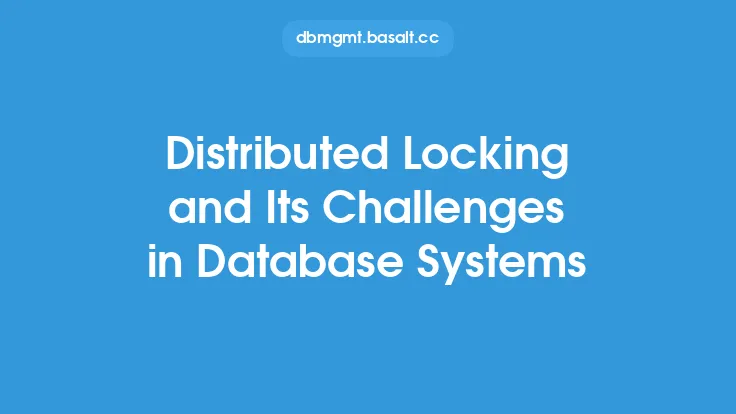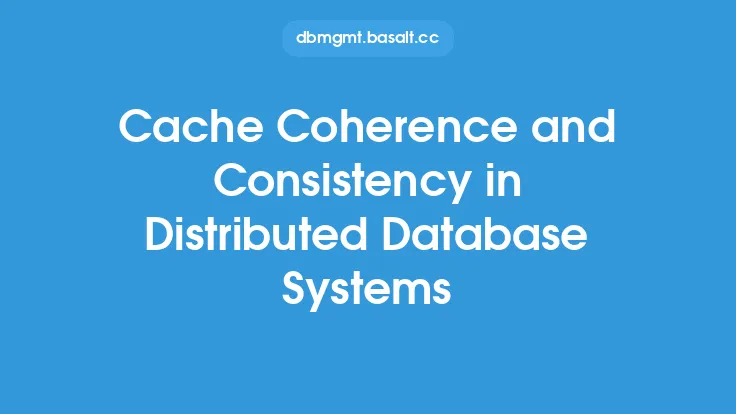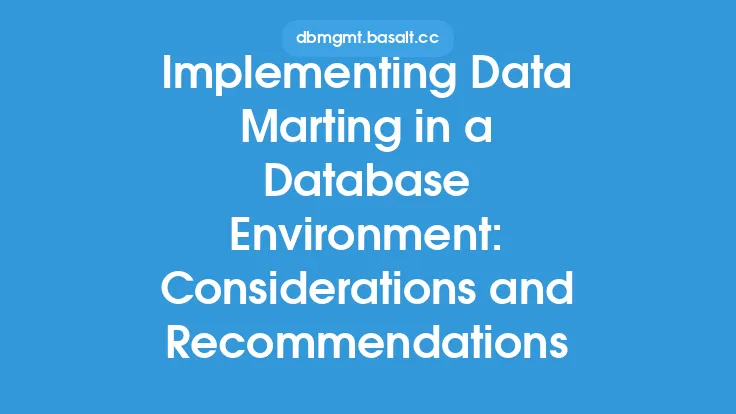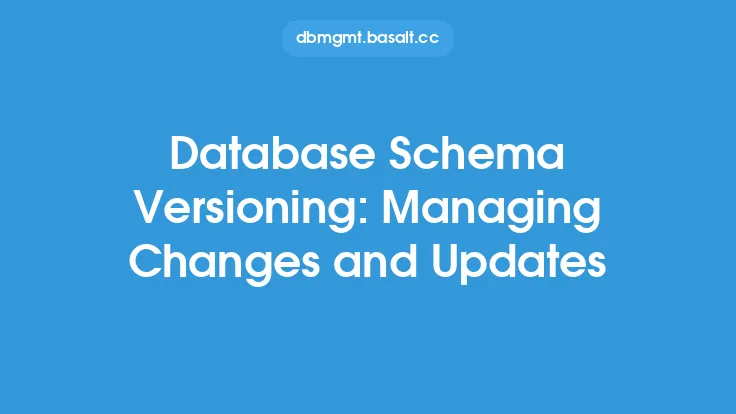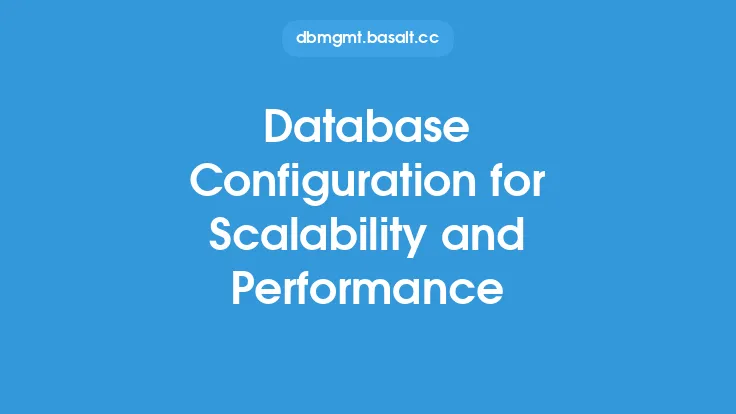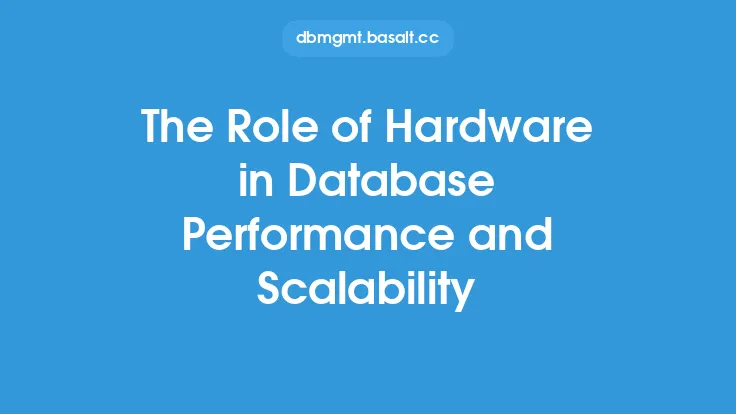When designing a database, one of the most critical decisions is the choice of architecture. Two of the most popular database architecture patterns are monolithic and distributed architectures. In this article, we will delve into the details of these two architectures, exploring their strengths, weaknesses, and use cases.
Introduction to Monolithic Database Architecture
A monolithic database architecture is a traditional, self-contained approach where a single database management system (DBMS) handles all data storage, processing, and retrieval. This architecture is characterized by a centralized database that stores all data in a single location, often on a single server or a cluster of servers. The monolithic architecture is simple, easy to implement, and well-suited for small to medium-sized applications with relatively low traffic and data volume. However, as the application grows, the monolithic architecture can become a bottleneck, leading to scalability issues, reduced performance, and increased maintenance costs.
Introduction to Distributed Database Architecture
A distributed database architecture, on the other hand, is a more modern and scalable approach that involves splitting the database into smaller, independent pieces called nodes or shards. Each node can be located on a separate server or even in a different geographic location, allowing for greater flexibility and scalability. Distributed databases use a variety of techniques, such as replication, partitioning, and caching, to ensure data consistency and availability across the nodes. This architecture is well-suited for large-scale applications with high traffic, large data volumes, and strict availability requirements.
Comparison of Monolithic and Distributed Database Architectures
When comparing monolithic and distributed database architectures, several key factors come into play. Scalability is one of the primary advantages of distributed databases, as they can handle increasing traffic and data volume by simply adding more nodes to the system. In contrast, monolithic databases can become bottlenecked as the application grows, requiring significant hardware upgrades or even a complete redesign. Another important factor is performance, where distributed databases can take advantage of parallel processing and caching to improve query performance. Monolithic databases, on the other hand, can suffer from reduced performance as the database grows, leading to slower query times and increased latency.
Data Consistency and Availability
Data consistency and availability are critical aspects of any database architecture. In a monolithic database, data consistency is typically ensured through the use of transactions and locking mechanisms. However, as the database grows, these mechanisms can become less effective, leading to increased contention and reduced performance. Distributed databases, on the other hand, use a variety of techniques, such as replication and partitioning, to ensure data consistency and availability across the nodes. These techniques can be more complex to implement and manage, but they provide greater flexibility and scalability.
Security Considerations
Security is another important consideration when choosing a database architecture. Monolithic databases are often easier to secure, as they involve a single, centralized system that can be protected with traditional security measures, such as firewalls and access controls. Distributed databases, on the other hand, involve multiple nodes and communication paths, which can increase the attack surface and make security more challenging. However, distributed databases can also provide greater security through the use of techniques, such as encryption and secure communication protocols, to protect data in transit and at rest.
Use Cases and Examples
Both monolithic and distributed database architectures have their use cases and examples. Monolithic databases are well-suited for small to medium-sized applications, such as blogs, forums, and e-commerce sites, where the data volume and traffic are relatively low. Examples of monolithic databases include MySQL, PostgreSQL, and Microsoft SQL Server. Distributed databases, on the other hand, are well-suited for large-scale applications, such as social media platforms, online gaming, and big data analytics, where the data volume and traffic are high. Examples of distributed databases include Google's Bigtable, Amazon's DynamoDB, and Apache Cassandra.
Best Practices and Recommendations
When choosing a database architecture, several best practices and recommendations should be considered. First, it's essential to understand the application's requirements, including the expected data volume, traffic, and performance needs. Second, it's crucial to consider the scalability and flexibility of the architecture, as well as the complexity and cost of implementation and management. Third, it's important to evaluate the security and data consistency requirements of the application and choose an architecture that can meet these needs. Finally, it's recommended to consider the trade-offs between monolithic and distributed architectures and choose the one that best fits the application's needs.
Conclusion
In conclusion, monolithic and distributed database architectures are two popular approaches to designing a database. While monolithic databases are simple, easy to implement, and well-suited for small to medium-sized applications, distributed databases offer greater scalability, flexibility, and performance, making them well-suited for large-scale applications with high traffic and data volume. By understanding the strengths, weaknesses, and use cases of each architecture, developers and database administrators can make informed decisions when choosing a database architecture for their application. Ultimately, the choice of database architecture depends on the specific needs of the application, and a careful evaluation of the trade-offs between monolithic and distributed architectures is essential to ensure the best possible outcome.
